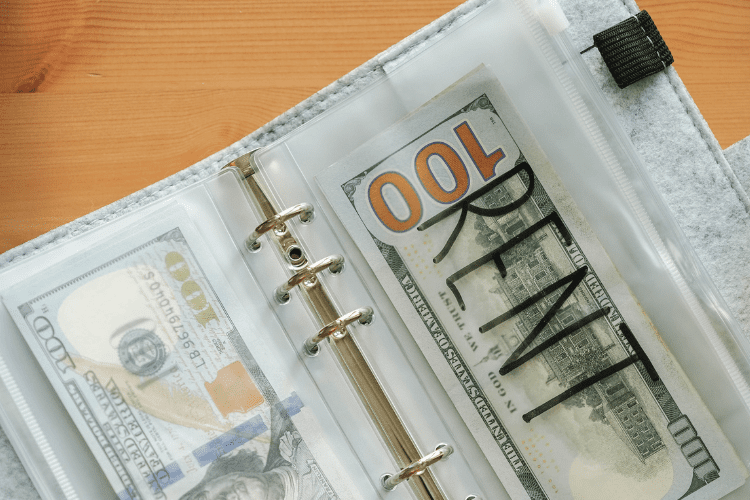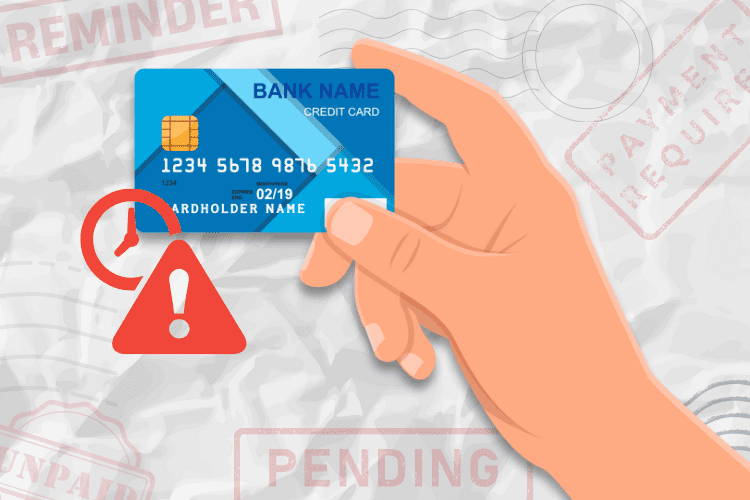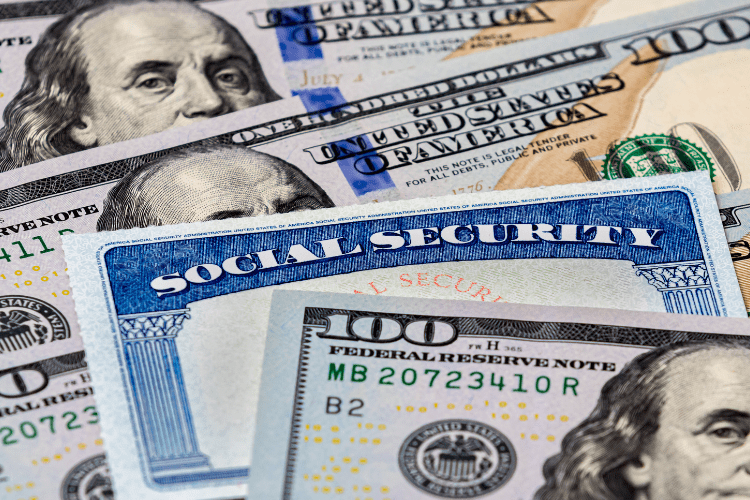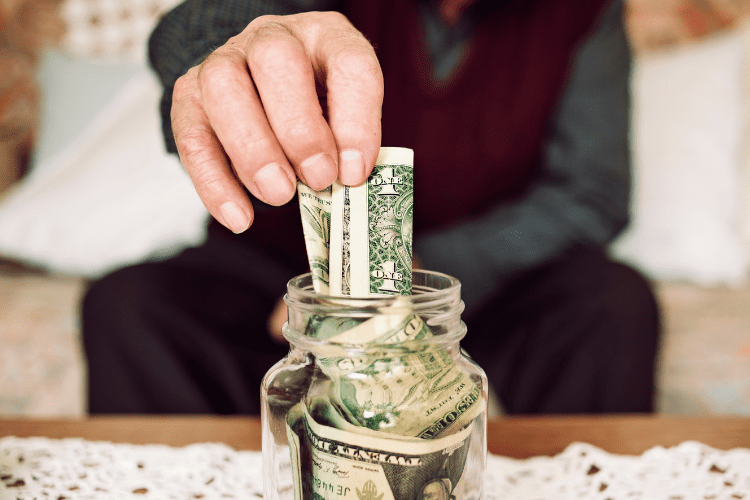How to Budget by Cash Stuffing – The Envelope Method

Cash envelopes have become popular thanks to social media, and “Cash Stuffing,” as many Instagram and TikTok users would call it, has gained momentum since it’s a tangible way to manage money.
Read on to learn more about cash stuffing, how to use them, and how they benefit you.
What Are Cash Envelopes and Cash Stuffing?
Consumer reports have shown that consumers overspend by $7,400 a year. Overspending is not hard to do; it’s extremely easy when you know you just got paid. However, keeping up with how we’re spending our money and what we’re spending on is not as easy. Sometimes it’s too late before we realize that we’ve overspent in some areas leaving us not having enough to spend in other areas.
Cash envelopes or “cash stuffing” is a budget system that helps to solve that problem by helping you physically track how you spend your money. Instead of using a debit or credit card, you allot physical money to everything you spend to keep from overspending.
If you’re new to budgeting, spend impulsively, or tend to overspend, the cash envelope method or cash stuffing may be a good way to help you manage your money better.
How Does Cash Stuffing Work?
It’s not hard to do since you should already have an idea of how you spend your money. Cash stuffing helps you to see what’s happening physically – why you may be coming up short every month or unable to save. If you want to start using cash envelopes and cash stuffing, here’s what you do:
1. Buy cash envelopes or repurpose what you already have. Cash envelopes are available in many places – from Amazon to Etsy and Walmart – and places in between. Some use envelopes, while some prefer a binder system (previously used for coupons but now for cash). Find out what works for you!
2. List out your income and expenses. This can be as simple or complex as you want it to be. It can be as simple as having a general “money going out” category to more specific categories. Since the objective is to know how you’re specifically spending your money, it may work to your advantage to be more specific, especially with those expense categories. This is the best way to know where every dollar you spend is going.
3. Create and place cash in your envelopes. Once you’ve got those categories named, assign and label an envelope to each one. Here are some examples of cash stuffing categories:
- Groceries
- Entertainment
- One for each utility bill (gas, water, electricity)
- Medical/Prescriptions
- Personal
- Car maintenance
- Holiday Spending
- Vacation
- Savings
- And more
You should have some idea of how much you’re already spending in these areas. If so, that’s how much cash you put in the envelope. It’s okay to work with estimates the first month, but remember to use the results of your first month to make better decisions the next month.
It’s also OK if you prefer to pay your utilities or other bills online. Just make sure to have a spending amount on the envelope for that category and adjust your remaining balance as you go.
4. Spend from your envelopes throughout the month. When you go to the grocery store, remember to pull the cash from your envelope dedicated to groceries. Do this throughout the month for every category of spending.
Remember, if you make online purchases or pay bills online, note it and place it in your envelope so you will always know how much you’re left with for the remainder of the month.
@allthingsplanned_ Happy Friday🌸 • • • • • #cashenvelopestuffing #cashstuffing#cashstuffingenvelopes #budget #budgeting #money #debtfreecommunity #sinkingfunds #sinkingfund #budgetcommunity #budgetforbeginners #debtfreejourney #debtfree #financialfreedom #finance #personalfinance #frugal #savemoney #savings #savingmoney #wealth #frugalliving #cash #money #asmr ♬ original sound – Jenika Nicole
How To Handle Money Left at the End of the Month
If you have money left at the end of the month, that’s great! That means you’re not in financial distress because you have enough money to live and pay your bills. However, most financial experts will tell you the objective should always be to have a zero-based budget. That doesn’t mean spending until it’s all gone; it just means making sure every dollar has a purpose. So, if you have money left at the end of the month, here are some options:
- Leave the extra money in the envelope, but budget for that much less in that category the next month.
- Deposit the extra money from any and all envelopes into a high-yield savings account. This is also a good indication of how much money you can afford to save each month. Maybe now is a good time to start an envelope for savings.
- Put the extra money toward debt. Even though you may have already paid your car payment (for example) for the month, using the remaining money toward it as an extra payment or adding it to the next month’s payment will only help you to pay it off sooner. It’s a great way to pay down debt.
- Depending on how much money is left over, you may be able to split it between savings and debt.
The Benefits of Using Cash Envelopes for Cash Stuffing
Using the cash envelope system has multiple benefits. Here are just a few:
- It keeps you on track with how much you’re spending and how much with each category
- It keeps you disciplined as you physically see your money disappearing each month
- It holds you accountable for how you’re spending your money
- If you’re doing it the right way, it makes it harder to overspend
It’s the “old school” method of budgeting that’s becoming on trend again.
Tips When Using the Cash Envelope System
The cash envelope system can be a great budgeting tool, but like any system, if you misuse it or use it incorrectly, it can fail. Here are a few tips I highly recommend should you choose to use this system:
- Have a budget in place before starting
- Only pull money from an envelope if you have to
- Never leave extra money in your envelope to increase your spending in that category for the next month unless it’s a bill
- Only withdraw from your bank no more than you have income coming in. If you’re paid weekly, bi-weekly, or monthly, you may withdraw as often. Or, you may want to wait until the month’s end and make one withdrawal.
- If you order something online, make sure to deposit money into your bank account from the respective envelope so there’s no overdraft fee
- Your change is part of your income, don’t discount it. As you’re spending cash, you’re likely receiving change. Keep the change in the zippered component of your cash envelope, and don’t forget to use it. If you have a lot, you could exchange it for bills at the bank.
- Adjust the amount of cash in your envelopes as needed based on the previous month’s results.
The Bottom Line
The cash envelope system is an excellent budgeting method to help new budgeters manage their personal finances. If you’re still trying to find a way to become better at managing your money, jump on board with the masses and give cash stuffing a try.
Read More:










